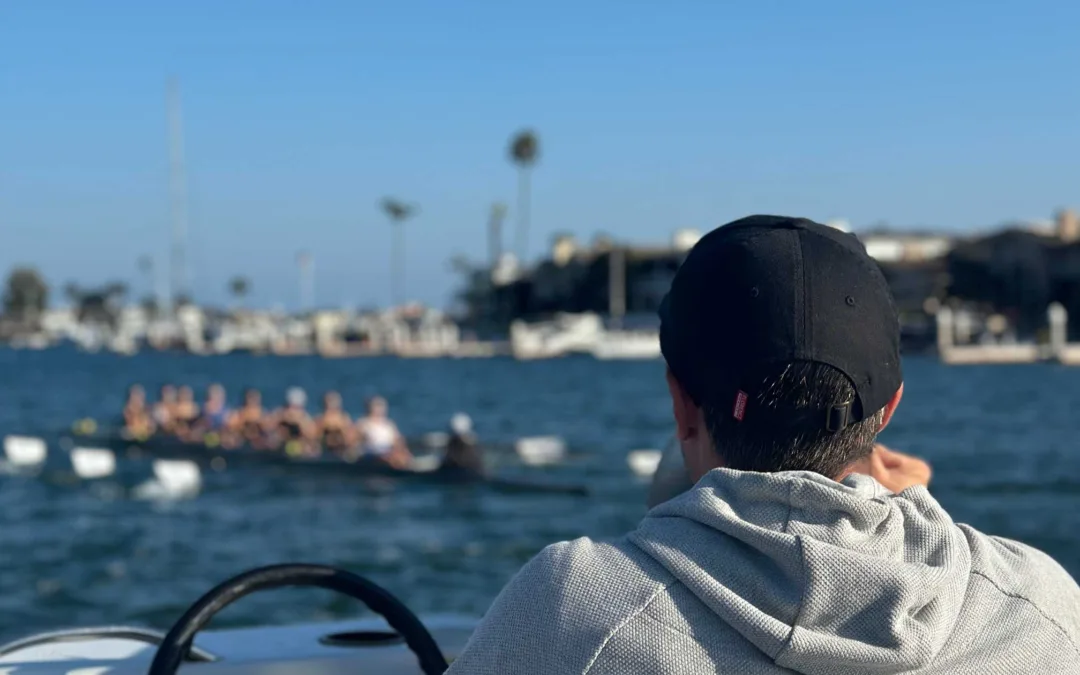At the recent first camp for the USRowing Pathways camp, I presented the question to the young rowers. “Would you rather be a lion or a wolf? My theory is that the old Pathways models were looking for lions. Huge, physically superior athletes in isolation.
Based on conversations with coaches and athletes across the program, it seems like the Pathways model of the future needs to unite athletes into a dominant wolfpack where the social and emotional skills and talents required to build a championship team are valued and developed.
Here’s how we build that team together:
Background
Over the last 30 years, many sports have developed Pathways plans that try to create a Long Term Athlete Development model for their athletes to follow to achieve the highest levels of success in that sport. There is a growing commentary that these Pathways models need improvement, as they are traditionally too focused on current physical development and competition results, and primarily they fail to include the social, emotional, and mental aspects of athlete development. There is also the issue created by the Relative Age Effect, where birthdates and the age of puberty influence Pathway opportunities.
As a Pathways example, in 2024 recently the most successful crew for USRowing is the World Silver Medalist Lightweight Women’s 2x. All three of the athletes who have featured in that crew achieved their success from outside the established Pathway.
Mary Reckford of that crew told WMUR “I had dreams about the National Team, but I was always too small or too slow. So, I sort of gave up on my dreams of being a National Team rower, and I worked an office job.”
Reckford existed outside the old Pathways system and showed a huge amount of mental toughness and resilience in her journey to becoming a world-class rower. Just how many other world-class rowers have we lost along the way?
The Future
Pathways systems need to evolve to include a longer-term vision and be based around lifelong learning and opportunity. Building on the challenges highlighted earlier, let’s delve into the key changes essential for reshaping the Pathways system.
Here are five key changes that the new system needs to address:
- Broaden the Definition of Talent:
- Talent extends beyond physical attributes when a teenager.
- Late bloomers can go just as far with steady, patient development.
- Build the Team earlier:
- Sharpen skills in leadership and teamwork.
- Surround yourself with the right people to amplify your purpose.
- Foster a culture of positive accountability.
- Cultivate Long Term Athlete Welfare and Team Bonding:
- Non-linear journey: build support systems for the ups and downs.
- Deepen team connections for a more collaborative and enjoyable atmosphere.
- Mind Over Matter:
- The athlete’s state of mind is the primary factor influencing performance & development.
- Fuel joy and hope in the sport to enhance overall well-being.
- Flexible Pathways:
- Join or leave the pathway at your own pace.
- The pathway is a guide, not the only route, being outside it shouldn’t let athletes like Reckford feel they should give up on their dreams.
Anecdote from overseas
The Aspen Institute identified the US Pathways systems generally being propped up by the shear scale and number of youth athletes compared to other countries:
“the chase for financial and other rewards that flow to elite athletes and the programs that serve them increasingly shape the sport ecosystem down to the entry-level, both creating and denying sustained participation opportunities for youth.”
💡 The US has dropping youth sport participation in part due to talent pipelines chasing roster spots in college and professional sports.💡
Norway and New Zealand in contrast were regularly identified as two of the top four most efficient nations in terms of Elite Performance relative to their small populations across all sports due to the success of their Pathways systems. Looking specifically at Rowing Pathways, both NZ and Norway have earned between 7-8x as many medals at senior Worlds compared to Junior Worlds, meanwhile, the US earns only 2x as many medals in the same comparison. This long-term approach has shown success at the Olympic and Senior Worlds levels in particular for New Zealand who won medals in both the Men’s and Women’s Eight at the last Olympics.
Where do we go from here?
CrewLAB wants to provide the tools of the future that help build the team environment that gets US Rowers where they want to get to. Rowers should be excited about how the Pathway system can unite people from different places and backgrounds. The Pathway needs to be a social environment that both helps the elite athlete and inspires everyone else to get involved and contribute over the long term.
The pathway system needs to be a patient process that helps rowers move at their own pace from good, to great to World Class. This means retention of athletes, and also providing multiple ways to be an active member of the pathways experience. It also means creating more emphasis on learning to become a better teammate and on leading your teammates by role-modelling the right sort of behaviours.
Michelle Sechser, who is a part of the USRowing LW2x had this to say to Row2k as her advice for younger rowers. “I wish when I was younger I had believed in myself more and not been afraid to dream big and really believe that I could achieve hard goals. It’s helped to have a lot of encouraging people along the way. It’s not an easy thing to do when you’re young and unsure of yourself. If you’re willing to put in the hard, focused work that it will take to get there, don’t be afraid to set big goals and become a version of yourself that would blow your current self out of the water. And be a good teammate. This will be the most important foundation you can build your rowing career on. Learn how to help raise up your teammates in the boat and help them be the best version of themselves. Support them, empower them, call them out when they need it. If you do this you’re going to enjoy the journey along the way a lot more, and it will help make the boat you’re in go faster.”
The Bottom Line
Pathways needs to be a part of a rewarding experience for as many athletes as possible. Participation should make rowing better, and every young rower must know they have a key contribution to make, no matter who they are and where they at in their rowing journey. Our future Champions can come from anyone.
%20(4).jpg)
Scholar Links
https://www.tandfonline.com/doi/full/10.1080/21640629.2023.2275402






